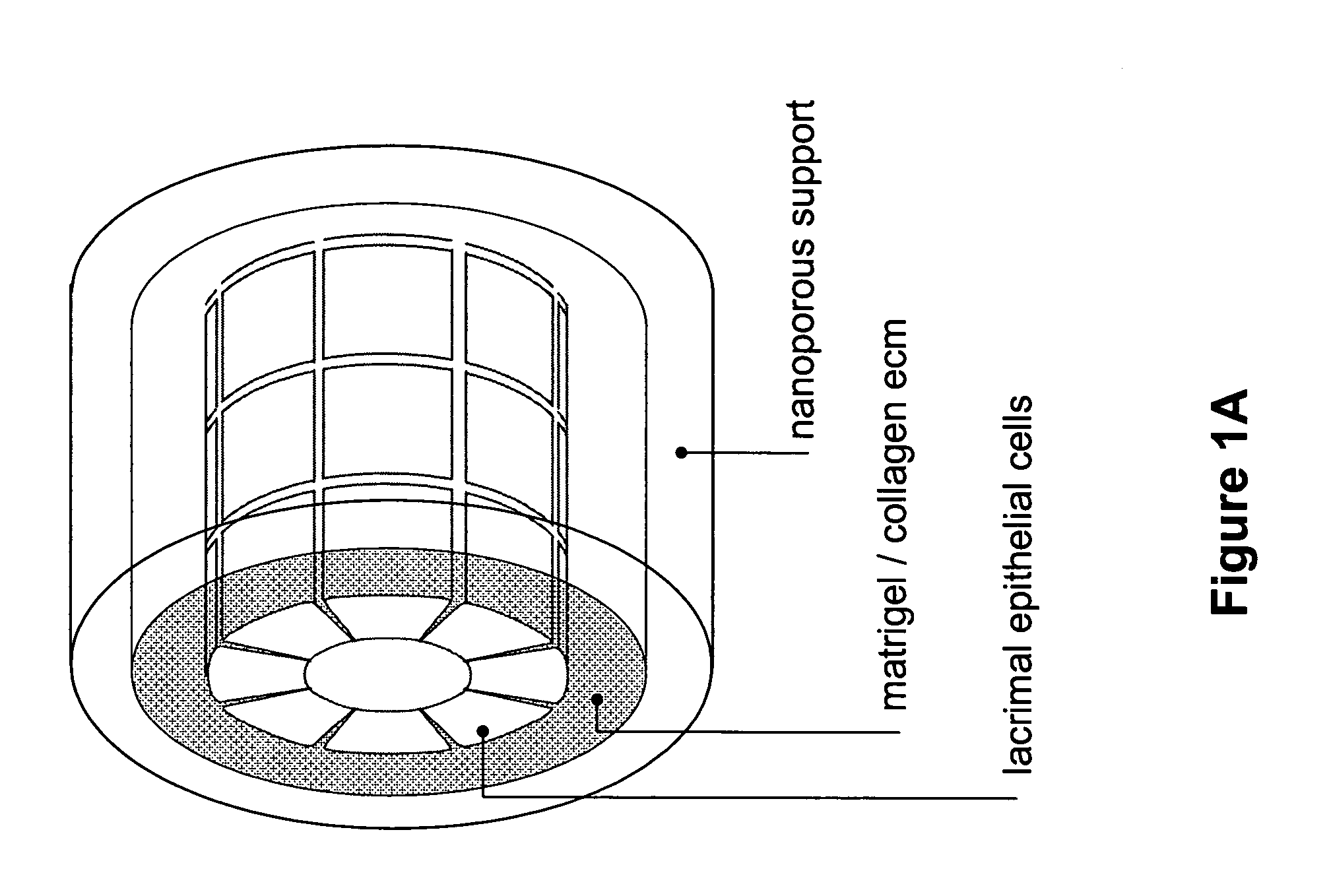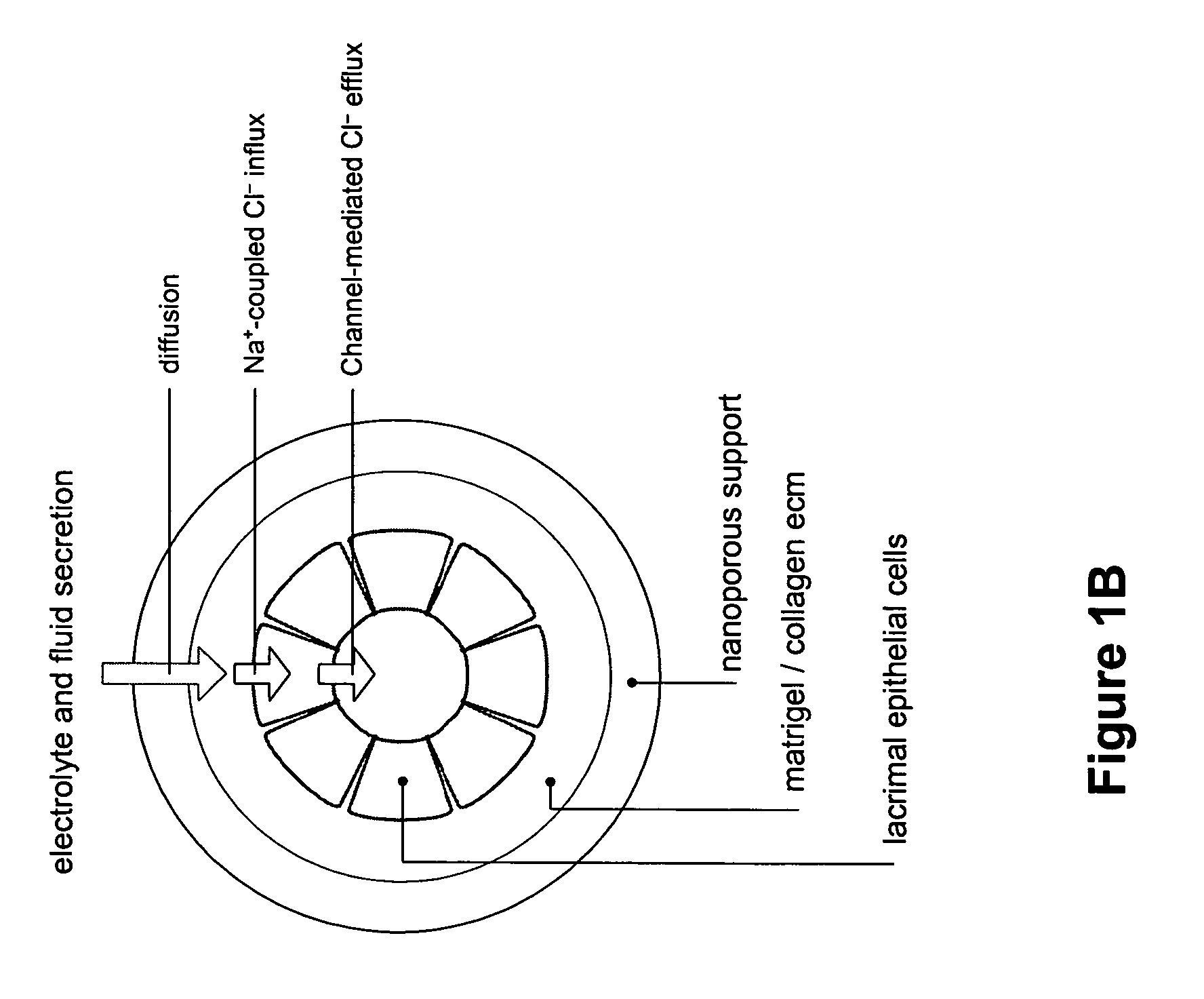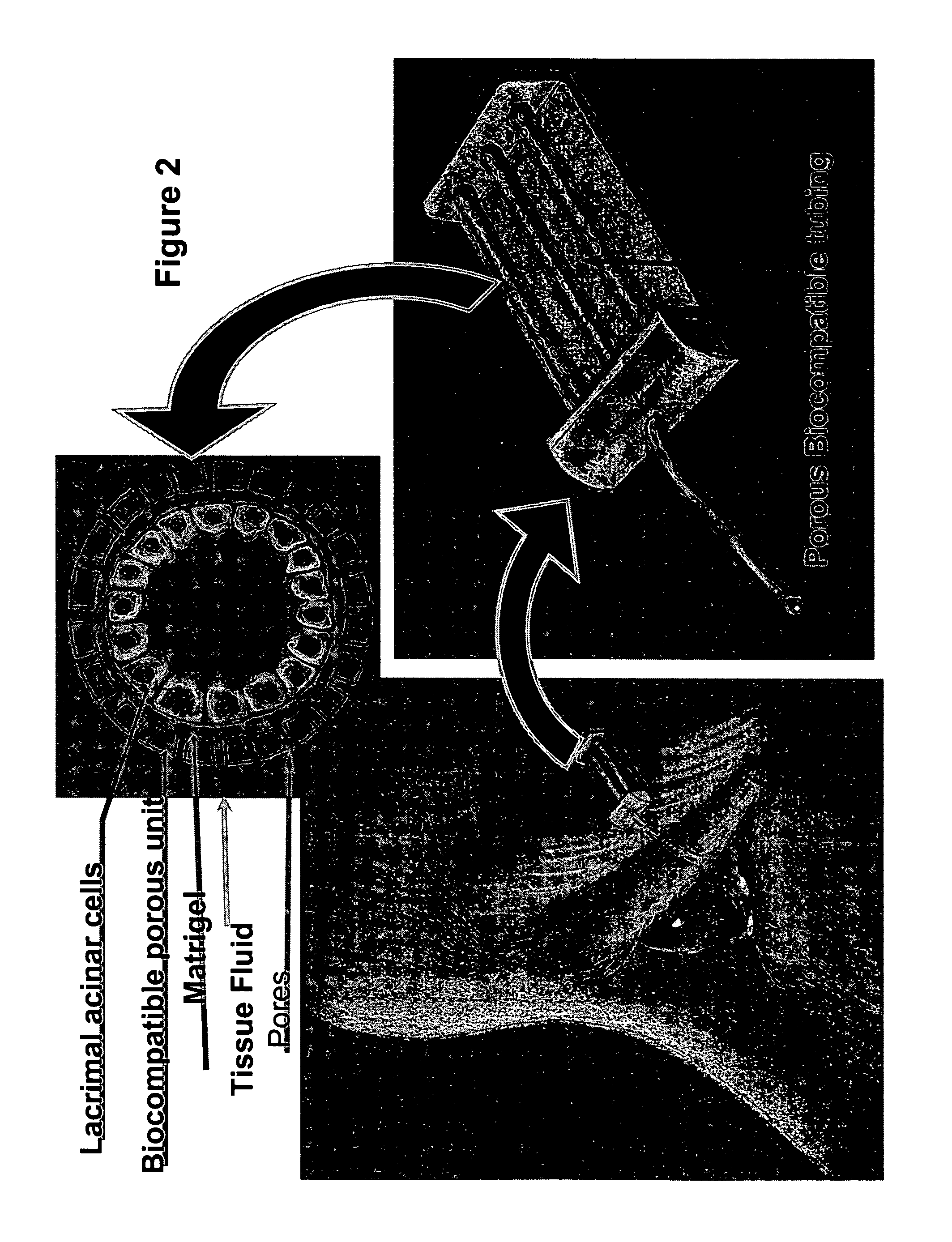Bioartificial lacrimal gland
a lacrimal gland, bio-artificial technology, applied in the field of ophthalmology and tissue engineering, can solve the problems of corneal scarring or ulceration, infection and possible loss of vision, and general persistent symptoms, and achieve the effect of treating or reducing the severity of a disorder
- Summary
- Abstract
- Description
- Claims
- Application Information
AI Technical Summary
Benefits of technology
Problems solved by technology
Method used
Image
Examples
example i
Preparation and Characterization of a Bioartificial Lacrimal Gland
A. Isolation of Rabbit Lacrimal Epithelial Cells and Preparation of a Bioartificial Lacrimal Gland
[0116]Rabbits used for isolation of lacrimal epithelial cells are adult, female, New Zealand Whites (Irish Farms; Norco, Calif.), weighing approximately 4.0 kg. Animals are narcotized with a mixture of 1 to 1.5 ml ketaset (100 mg ml−1) and xylazine (100 mg ml−1), and euthanized with an overdose of Eutha-6CII (120 mg ml−1). All standards and procedures for the proper care and use of animals are as described in the Guiding Principles in the Care and Use of Animals (DHEW publication, NIH 80-23) and the ARVO Resolution on the Use of Animals in Research.
[0117]Purified rabbit lacrimal acinar cells are prepared essentially as described in Guo et al., Exp Eye Res. 71: 11-22 (2000), to yield a cell population composed of approximately 98% lacrimal acinar cells. Briefly, inferior lacrimal glands are removed aseptically, placed in a...
PUM
| Property | Measurement | Unit |
|---|---|---|
| pore size | aaaaa | aaaaa |
| pore size | aaaaa | aaaaa |
| pore size | aaaaa | aaaaa |
Abstract
Description
Claims
Application Information
 Login to View More
Login to View More - R&D
- Intellectual Property
- Life Sciences
- Materials
- Tech Scout
- Unparalleled Data Quality
- Higher Quality Content
- 60% Fewer Hallucinations
Browse by: Latest US Patents, China's latest patents, Technical Efficacy Thesaurus, Application Domain, Technology Topic, Popular Technical Reports.
© 2025 PatSnap. All rights reserved.Legal|Privacy policy|Modern Slavery Act Transparency Statement|Sitemap|About US| Contact US: help@patsnap.com



